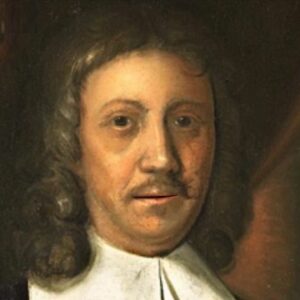Jan van Riebeeck is often regarded as the Cape’s Founding Father. He began his career as a Dutch Colonial administrator for the Vereenigde Oost-Indische Compagnie, which is today known as the Dutch-East India Company. Riebeeck served at several trading posts throughout the world, including Tonkin, Indochina, Japan, and Batavia; but he is best remembered for creating an opening for white immigrants in South Africa. Although some say he harmed the Cape’s natural habitat, he was praised by the country far into the 1990s. Riebeeck was a devout family guy who traveled with his wife and children, as well as a fervent Christian. Following in his father’s footsteps, he began his career in surgery but had a variety of jobs over the course of his career, from assistant surgeon to secretary to the Council of India; a love he passed on to his eldest son. Although he died at the age of 58, he played a pivotal role in the history and establishment of South Africa. For decades, he was honored across the country for his contributions to history.
Childhood & Adolescence
Johna Anthoniszoon Van Riebeeck was born on April 21st, 1619, in Culemborg, the Netherlands, to Anthony Jansz Van Riebeeck and Elisabeth Govertsdr Van Gaesbeeck. He has one younger brother, Geertruyd.
Van Riebeeck was a surgeon’s son. He later became an assistant surgeon in 1639 after learning his trade from his father.
He grew up in Schiedam and met his wife, Maria de la Quellerie, there. On March 28th, 1649, they got married. He was thirty years old when they married; she was nineteen.
Jan Van’s Career
In 1639, Van Riebeeck joined the ‘Dutch-East India Company.’ His first task as an assistant surgeon was to sail to Batavia.
In 1645, following a successful assignment in Batavia, he was appointed manager of the company’s Tonkin trading station (now Tonkin Vietnam). He was eventually removed from his post and asked to return home after it was determined that he was trading for his own profit and advantage.
On his return voyage, his ship was stopped in Table Bay, South Africa, for 18 days. He immediately recognized that the cape was an excellent location for supplying vegetables and clean water to passing ships, hence reducing crew mortality due to scurvy.
Van Riebeeck was recruited by the ‘Dutch-East India Company’ in 1651 to build the first Dutch settlement in Africa.
On April 6th, 1652, he returned to the southernmost point of Africa with three ships, the Reijer, the Dromedaris, and the Goede Hoop. Shortly afterward, the Walvisch and the Oliphant landed, having buried 130 crewmen at sea.
From 1652 to 1662, he was captain of the settlement. The community grew from 82 men and 8 women to 134 officials, 35 free burghers, 15 women, 22 children, and 180 slaves throughout this time period.
He was appointed to the position of Secretary to the Governor-General of the Dutch-East Indies after leaving the Cape. He served in this capacity from 1665 to 1677.
His Significant Works
Van Riebeeck established the Council of Policy on the trip to the Cape, which met on the Dromedaris. The conference minutes, dated December 1651, are regarded as the start of South Africa’s written public records, as the indigenous people lacked a written culture.
In 1658, he established a historic precedent by exiling a local translator named Autshumato to Robben Island for committing crimes against the ‘Dutch-East India Company.’ Throughout the years, this island housed a large number of political prisoners, including Nelson Mandela.
His journal, ‘Precis of the Cape of Good Hope Archives,’ was published in both English and Dutch. The journal, colloquially referred to as ‘Riebeeck’s journal, was a three-volume daily record of the South African trading station of the ‘Dutch-East India Company.’ The journal spans the years 1652–to 1655.
Awards and Accomplishments
Historically, April 6th was known as ‘Van Riebeeck’s Day. This was eventually renamed ‘Founders’ Day’ before being abolished entirely by the ANC administration following the 1994 democratic elections.
Once dubbed the nation’s Founding Father, his likeness graced paper currency and several stamps from the 1940s to 1993. During this time period, the South African Reserve Bank altered the money to a non-political design.
Cape Town’s Coat of Arms, which was established in 1869 during the British administration, included a monument to the Cape’s Founding Father. Within his commissioned drawing, designer Charles Fairbridge used the three gold rings from Riebeeck’s personal Coat of Arms.
Personal History and Legacies
He fathered eight children during his lifetime, most of whom died in infancy. Abraham, his first son, became Governor-General of the East Indies.
Maria de la Quellerie, his first wife, died in Malacca in 1664 at the age of 34. She was on her way to the final assignment of her spouse.
He remarried Maria Scipio on March 10, 1667. They were married till he died.
He died in Batavia on 18 January 1677, at the age of 58. (present-day Jakarta).
Estimated Net worth
Jan is one of the wealthiest Explorers and is mentioned on the list of the most popular Explorers. Jan van Riebeeck’s net worth is estimated to be $1.5 million, based on our analysis of Wikipedia, Forbes, and Business Insider.
Trivia
He was Africa’s first importer of European wine cuttings. The earliest known pressings of wine grapes in Africa occurred in autumn 1659.
His ‘Company Gardens’ were conserved and remain in use as a park in Cape Town’s central business district. His commands resulted in the planting of an almond hedge, which still thrives in the park today.
Between 1666 and 1679, the original clay fort was rebuilt in brick. It is still known as the Castle of Good Hope.
On May 18th, 1899, a bronze statue of the Founding Fathers was unveiled on Cape Town’s Heerengracht Street. On Adderley Street, a similar statue of his wife stands.


